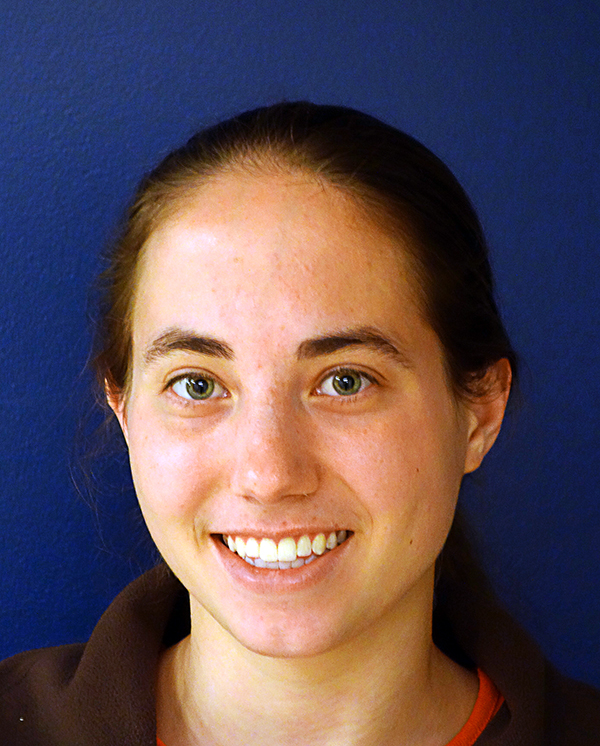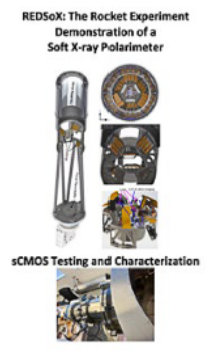
Sarah Heine
Research Scientist
- Ph.D. (2014) • Physics • Massachusetts Institute of Technology
- B.Sc. (2008) • Physics • Massachusetts Institute of Technology
- Research Scientist at MIT Kavli Institute for Astrophysics and Space Research, Cambridge, MA
- Technology and mission development for soft X-ray astrophysics, currently focusing on soft X-ray polarimetry and testing of sCMOS sensors for use in the soft X-ray and on flight missions utilizing funding from NASA APRA, RTF, and SBIR grants.

Top: CAD models of the REDSoX sounding rocket payload. Top left: entire payload, top right upper: aft side view showing optics shells, CAT gratings, and the imaging detector in the center of the focal plane, top right middle: CAT grating assembly, top right lower: focal plane including four CCD detectors and three laterally graded multilayer mirrors. Bottom: A flange mounted CMOS detector being tested in the soft X-ray regime on the end of the MIT polarimetry beamline.
- Hardware development for soft X-ray Polarimetry (currently deputy PI on REDSoX-a sounding rocket based soft X-ray polarimeter)
- Utilizing sCMOS detectors in the soft X-ray for flight missions
- Development of technology to help make smaller, less expensive X-ray flight missions more feasible (by lowering cost, cooling, power, and focal length requirements)
- TES Microcalorimeters
- Building the REDSoX payload and realizing a successful mission.
- Building my skills as PI with an eye toward future missions.
- Characterizing an existing, or helping to develop a new, sCMOS sensor that can be utilized in a soft X-ray flight mission.
- Mentoring students, both undergraduate and graduate, especially to foster a love of instrumentation in young scientists.
- Helping to nurture and encourage an inclusive and diverse workforce in instrumentation through outreach and engagement with my institution.
